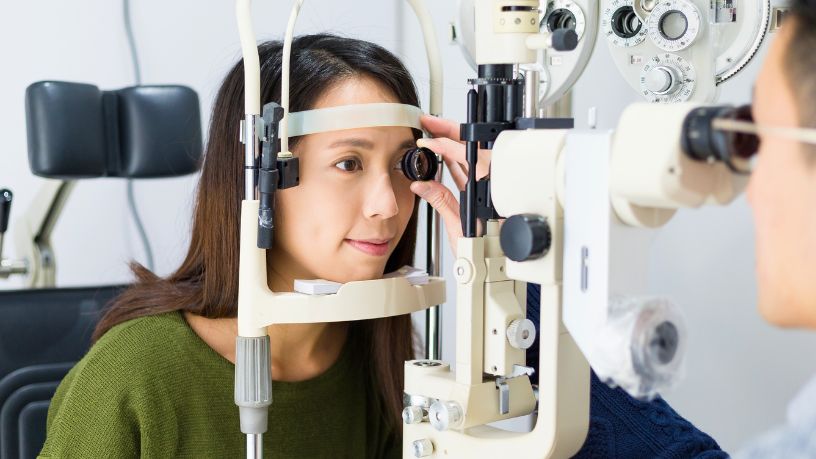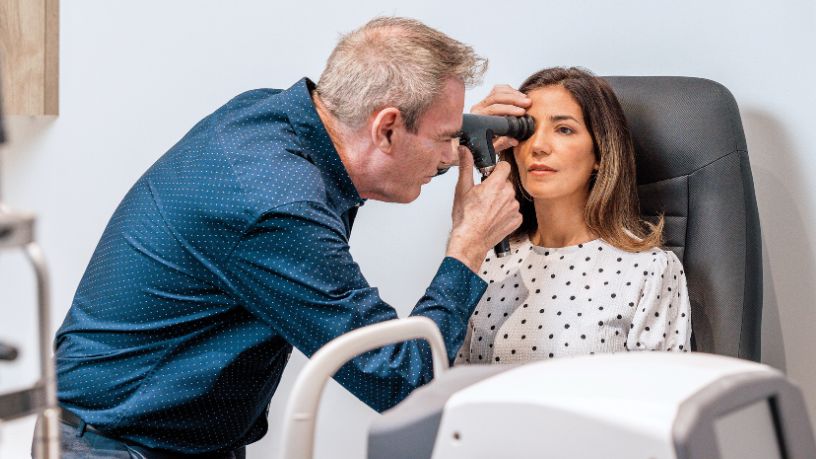On this page
Key takeaways
- Shielding your eyes from strong sunlight is crucial for eye health.
- Sunglasses protect your eyes from the dangers of UV radiation.
- Not all sunglasses conform to sun safety standards.
Sunglasses make an excellent fashion statement, and many Aussies don’t feel dressed without them. We put a lot of time, effort and money into choosing our latest pair, and are often guilty of focusing on the style rather than the UV-blocking capabilities. Because, yes, that’s what they’re actually for.
“As an optical professional, I know the importance of finding sunglasses with both aesthetic appeal and sun safety built in,” says Karen Makin, head of clinical at Bupa Optical. “But, far too often, people will only focus on the former.”
Choosing the right sunglasses will prevent long-term eye damage and save you from the headaches and fatigue that come from squinting and eyestrain. Here’s what to look out for the next time you’re browsing for a new pair of shades.
Why do I need to wear sunglasses?
In Australia, about 6 in 10 people wear sunglasses during peak UV exposure times.1
Research conducted by Optometry Australia reveals that more than a third (36%) of us don’t own a pair of protective UV sunglasses, and 30% don’t believe wearing sunglasses is necessary.2 But it is.
“In Australia, owning a good pair of sunglasses is an absolute necessity,” says Makin. “This is because we have one of the highest ultraviolet (UV) radiation levels in the world, with a skin cancer rate to match.”
When you think of sun safety, you’ll probably recall the Slip, slop, slap public service campaign that launched in the 1980s. But in recent years, the Cancer Council has added ‘seek’ and ‘slide’ into the mix. Slide means putting on a pair of sunnies, because while looking after your skin is crucial sun-smart behaviour, so is looking after your eyes.
What will UV radiation do to my eyes?
Exposure to high UV radiation is dangerous to your eyes in a variety of ways, and the lighter your eye colour, the more careful you need to be.3 Excessive exposure to sunlight can:
- Damage your retina, the tissue at the back of your eye, or your macula, the part of your eye responsible for sharp, detailed and colourful vision.
- Lead to the development of cataracts, which occur when your eye’s lens becomes opaque and cloudy.
- Lead to solar keratopathy, which affects the clear front surface of the eye (the cornea).
- Result in pterygium, a growth on the clear tissue covering the white part of the eye, a common condition in Australia.
“Wearing sunglasses that block out UV rays can help prevent these issues and keep your eyes healthy,” says Karen. “What’s more, wearing sunglasses can also help to reduce glare from the sun and minimise the strain on your eyes, which will prevent sun-related headaches and migraines.”
Did you know, eyelid skin cancers account for 5-10 per cent of all skin cancers? A good pair of UV-blocking sunnies will help to prevent that.
How to choose the right pair of sunnies
When it comes to finding a pair of sunglasses that can protect your eyes, the first and most important thing to ensure is that they conform to Australian Standards and block out UV.
According to Cancer Council, you should check the label to ensure that the glasses have a ‘lens category’ of 2, 3 or 4. This means that they will be able to absorb 95% of the UV radiation that passes through them.
Tip: Sunglasses with a lens category of 4 are classed as ‘special-purpose’ and have very dark lenses for high-glare environments. They should not be worn while driving. Alternatively, the glasses may be marked with an Eye Protection Factor (EPF) rating, in which case you’re looking for a 9 or 104.
“Unfortunately, some sunglasses retailers don’t always conform to these standards, as a lot of sunglasses are produced for fashion over safety,” says Makin. “So, it’s important to always check the label.”
Book an eye test
Find and book your preferred spot at your local Bupa Optical store.
Are prescription sunglasses UV-safe?
Prescription sunglasses are sometimes considered a bit of a luxury, but are super practical if you’re outside a lot, driving during the day or reading by the pool on holiday. But they don’t always come with UV protection and anti-reflective coatings as standard, so discuss this option with your optometrist the next time you’re having a new pair made up.
“Once you’ve found the right pair of sunglasses, remember to wear them when UV levels reach 3 or higher,” says Makin. “Remember, it’s nice to look nice, but it’s even nicer to protect your health. When it comes to finding the right pair of sunnies, you can do both.”
Useful resources
Check out the SunSmart fact sheet for more information on sun protection for your eyes.
Monitor the UV levels in your area with Cancer Council’s SunSmart Global UV app.

At Bupa, trust is everything
Our health and wellbeing information is regularly reviewed and maintained by a team of healthcare experts, to ensure its relevancy and accuracy. Everyone's health journey is unique and health outcomes vary from person to person.
This content is not a replacement for personalised and specific medical, healthcare, or other professional advice. If you have concerns about your health, see your doctor or other health professional.
1 ABS. (September 2024). Sun protection behaviours.
2 Optometry Australia. (March 2022). Good Vision for Life.
3 Cleveland Clinic Health Essentials. (2023, June 16). Do Sunglasses Actually Protect Your Eyes?
4 Cancer Council, (2025). Protecting Your Eyes from the Sun
You might also like
Eye checks: A health essential
Getting to the optometrist every 2 years might not always be at the top of your mind, but did you know an eye check can detect more than just vision loss?
How an eye test could save your life
Did you know that a routine eye check can detect serious health conditions? Find out how this non-invasive test could help you protect your health.
How to choose the perfect sunscreen
A good sunscreen is one of the most important pieces of a flawless Aussie beauty routine, but which kind works best for your skin?
Cataracts: The basics
Cataracts is a leading cause of vision impairment, and the risk of developing it grows as you do. But the condition can be managed and even prevented.





